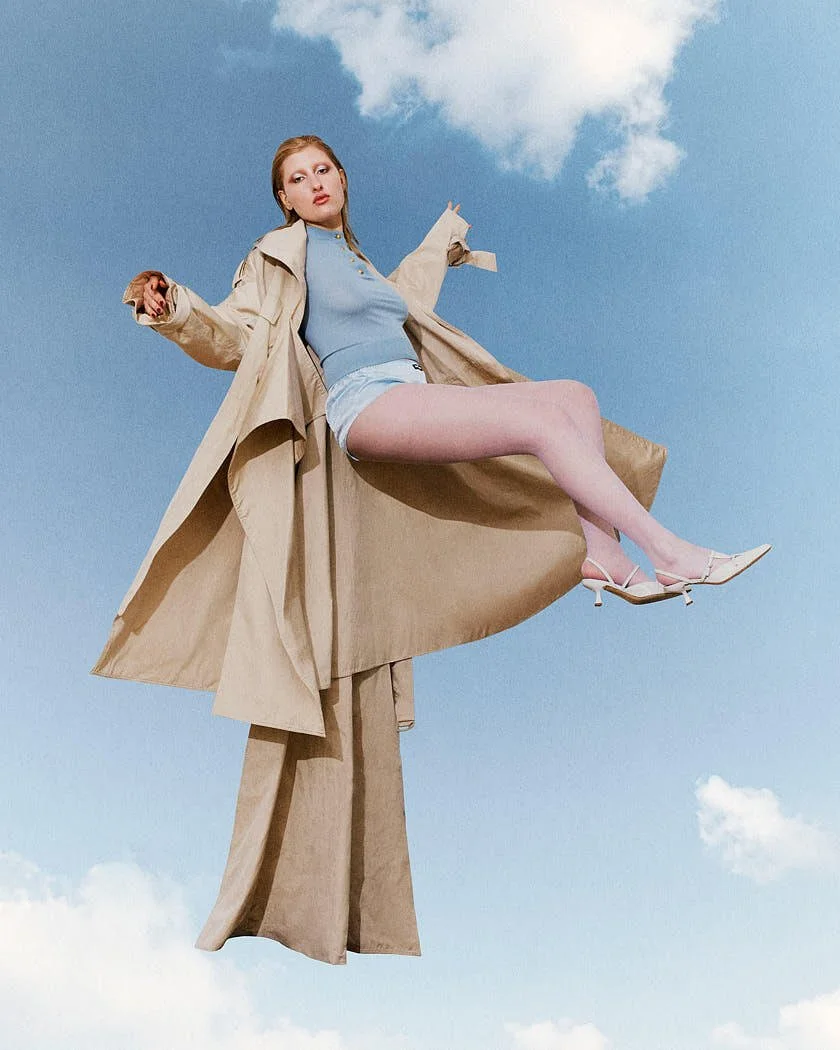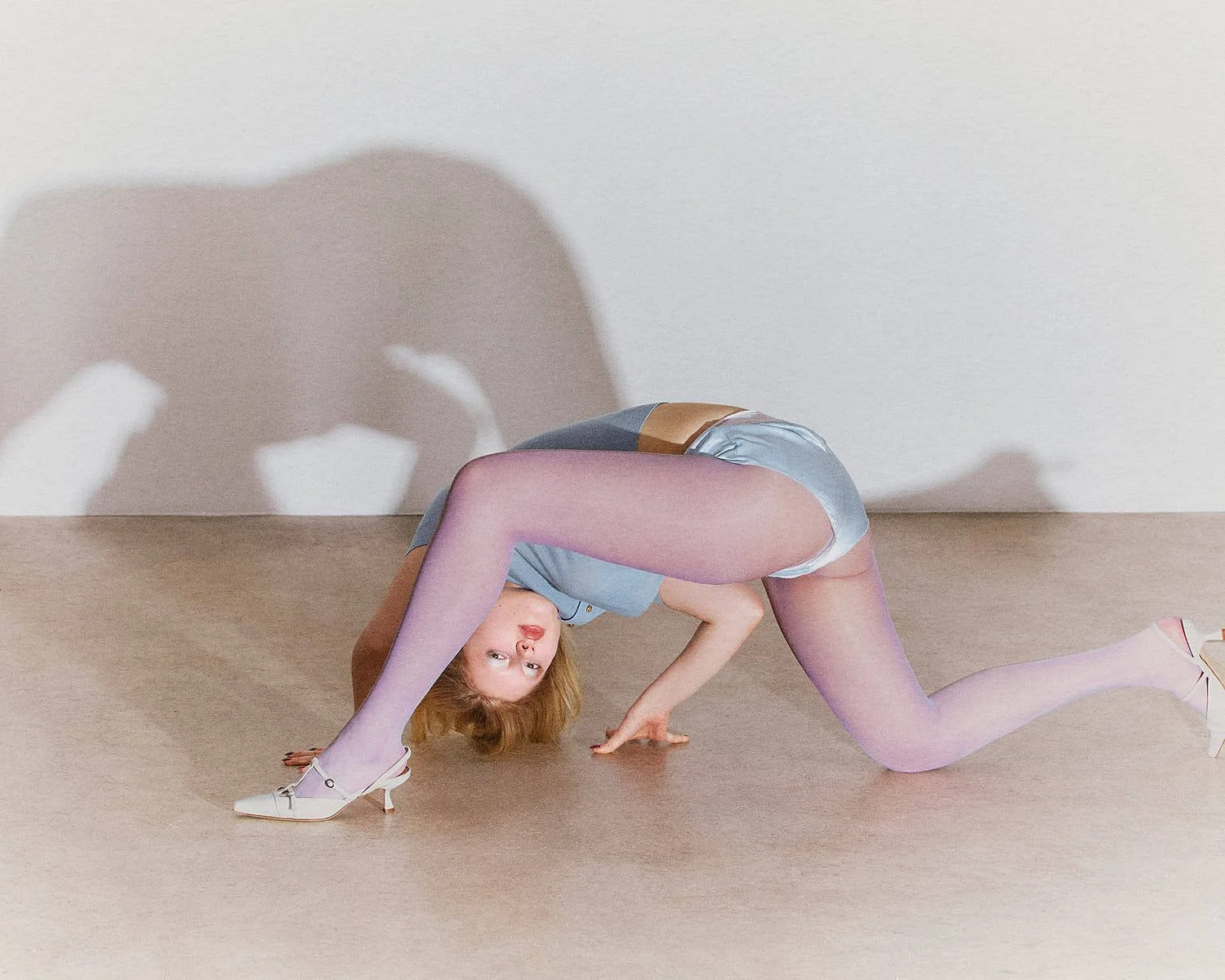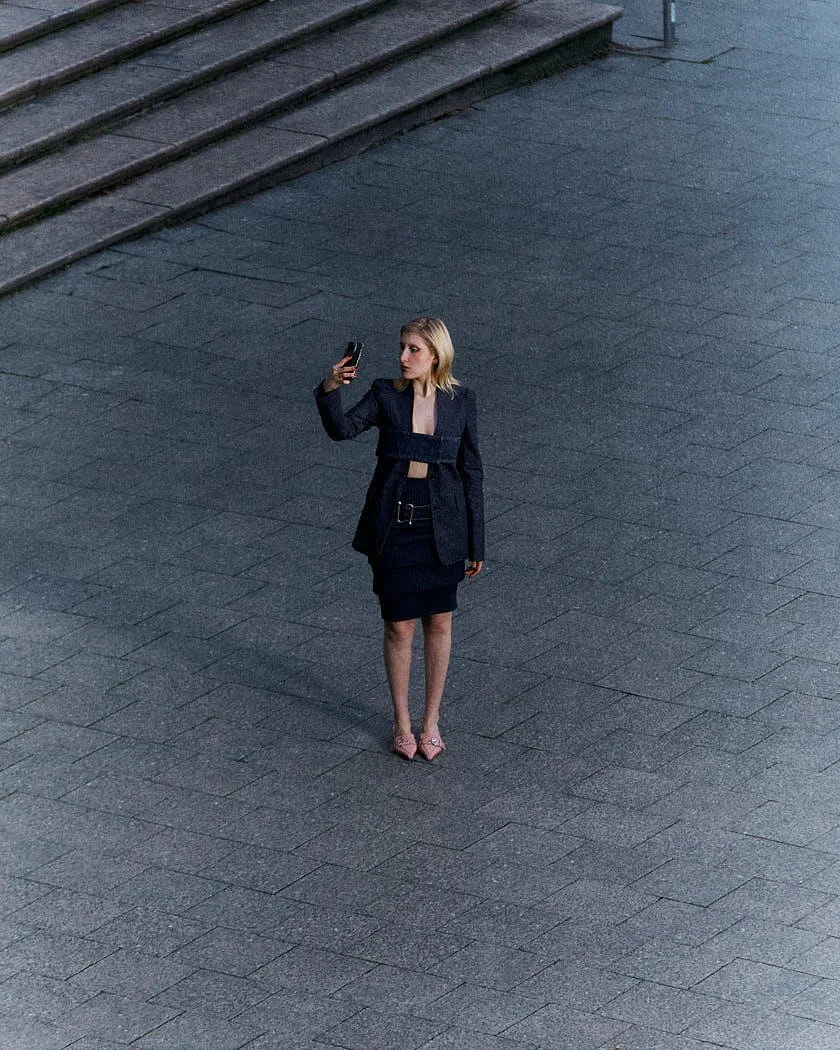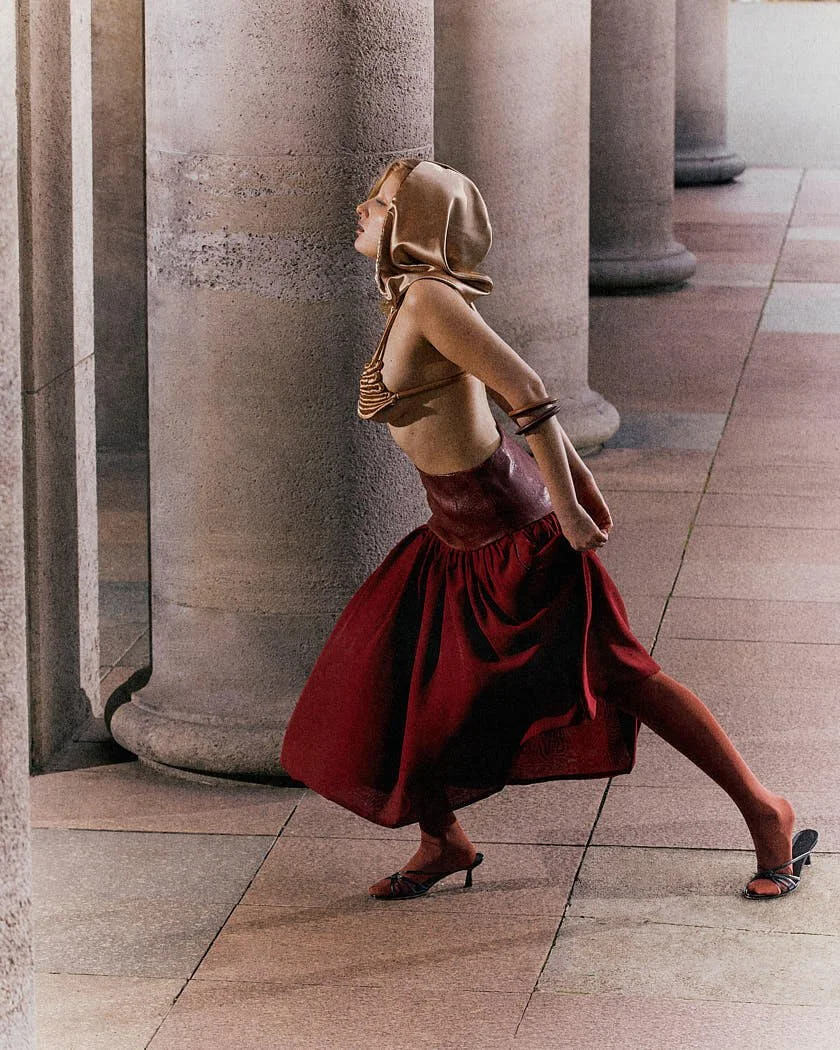YULIA PAVLEN
*When You´re Strange
written + interview HANNAH ROSE PRENDERGAST
POV: You embrace who you are, learn to laugh at yourself, and never fear standing out. —a friendly reminder from Yulia Pavlen.
Born in the early years of Ukraine’s independence, she grew up during a time of radical transformation. Ever the optimist, she carried bright, artful memories of home when she moved to Berlin in 2022.
In this new city, where being strange felt less like an exception and more like a shared language, her TikTok became an extension of how she moved through the world. If you see Yulia doing her makeup on the subway, the best thing you can do is be her mirror.
Shooting outdoors in 40°F (5°C) weather was one of my most challenging experiences. I wore five looks, most of which were lightweight—one was just a skirt and bra. I was freezing the whole time but didn’t say anything. I knew it wouldn’t be easy, so I focused on giving my best.
The team was amazing, checking in regularly, which I really appreciated.
I also faced my fear of heights: sitting on a subway exit railing, standing in a second-floor windowsill, and posing on an electrical box.
Despite the challenges, I’m incredibly grateful for the experience. I love stepping out of my comfort zone. My motto is, 'This scares me, but let’s try it. ' Taking risks and pushing myself are just who I am.
When I’m doing what I love, I forget about the discomfort. It feels like leaving the world behind and stepping into a space where I can express myself freely.
—Yulia Pavlen
Yulia Pavlen
Coverstory LE MILE Ephemeral Edition Nr. 38 / 01/2025
seen by Per Appelgren, wearing CELINE
“I was always Daddy’s little girl … riding on his motorcycle gave me my first real taste of freedom.”
Yulia Pavlen speaks with Hannah Rose Prendergast
for LE MILE Issue 38 / Ephemeral Edition SS25
coat JOSHUA SENGESPEICK
top CELINE
panties MIU MIU
shoes AEYDE
coat JOSHUA SENGESPEICK
Hannah Rose Prendergast
What inspired you to start your Get Ready With Me series on the subway?
Yulia
When creating new content, I always ask myself, ‘Would this idea hook me?’ The GRWM concept came to me almost by accident as I reflected on what would genuinely captivate me. I love makeup and often do it in public spaces, so the idea feels natural. Moving forward, I want to improve the quality of my content, especially in terms of lighting and video production. I’m always brainstorming new ideas. On TikTok, you can never be sure if an idea will succeed—you have to try it out and see how viewers respond.
How do you and your camerawoman work together to bring your vision to life?
My camerawoman, Valeria Shelihova, is also a close friend. Although we’re both from Ukraine, we met in Berlin. We have a great connection and often communicate without speaking. I provide the creative direction, and Valeria captures it all as it unfolds.
What do you find therapeutic about creating content?
It sounds odd, but I thrive on not being accepted by everyone. Not everyone rejects me for wearing makeup, but many people do. That energy of rejection, rather than breaking me, fuels my determination. I’ve learned to stand firm and not let others’ opinions affect me. When you stand your ground and refuse to let negativity define you, that’s when you truly win—and there’s no better feeling than that.
How has your artist name changed over time, and what does it mean to you now?
As a teenager, I went by 'Autistic' and even got it tattooed. I chose the name because I was reserved, shy, and had no friends. People thought something was wrong with me. At the time, I was studying in art college, immersing myself in painting and classical literature. I saw myself as a strange, lyrical character named 'Autistic.'
When I moved to Berlin, I was set to collaborate with a designer, but he declined because of my name. That’s when I realized it might be holding me back professionally. I wanted a name that feels more like me—timeless, elegant, and strong. Yulia Pavlen aligns more with where I’m heading, both creatively and professionally.
top CELINE
panties MIU MIU
shoes AEYDE
total look SPORTMAX
shoes AEYDE
“Moving to Berlin wasn’t easy, but thanks to the kindness of strangers, I never felt alone.”
Yulia Pavlen speaks with Hannah Rose Prendergast
for LE MILE Issue 38 / Ephemeral Edition SS25
top NICKLAS SKOVGAARD
tights FALKE
necklace PEARL OCCTOPUSS.Y
What was your experience growing up in Ukraine and then moving to Berlin?
I’m from Kharkiv, Ukraine’s first capital—a beautiful yet industrial city with a unique charm. I grew up in the Saltovka neighborhood, which endured heavy shelling due to its proximity to the Russian border. Soviet-era panel housing shaped much of my early years, but despite everything, I love Kharkiv and its people—they are kind, resilient, and have an incredible sense of humor.
Moving to Berlin wasn’t easy, but I was fortunate to meet incredible people who helped me with housing and paperwork and made me feel like family despite being strangers. Thanks to their kindness, I never felt alone or afraid of not knowing German. They were always there to support me. Living in Europe changed me. People here are much more supportive than in Ukraine. Back home, I often felt misunderstood or ridiculed. I guess I was a bit too different. Now, I’m excited to collaborate with talented professionals in the fashion industry from around the world.
Who introduced you to the world of art?
As an artist, my father exposed me to art from a young age. He often took me to exhibitions and museums and filled our home with books on classical and modern art. He also gave me many of his art materials, which became my first tools for creativity. I’m deeply grateful to him for immersing me in this world. I always knew I would become an artist—it was never a question. I dedicated myself to studying academic art, including drawing, painting, composition, and anatomy. I was incredibly passionate, and art became a way to express my thoughts and feelings. Although I’m not currently drawing, I may return to it someday.
How did you learn to ‘own your glow’?
The modeling industry values uniqueness and a distinctive edge more than conventional beauty. Many incredibly beautiful people struggle to present themselves. This skill comes from knowing who you are and embracing what sets you apart. Owning your glow is essential—it will shine through your work and light up the space around you.
Why should you believe in the kindness of strangers?
I always choose to believe in the good—it is a mindset that works best for me. The same goes for people I don’t know. I don’t dwell on whether they’re good or not; instead, I prepare myself mentally and emotionally to believe nothing bad will happen to me.
What change do you want to see in yourself and the world?
I want world peace. War is the worst thing that can happen. Personally, I want to be more patient with myself in achieving my goals. Good results take time.
What’s one of your core memories from childhood?
I was always Daddy’s little girl, spending most of my time by his side. He often took me on motorcycle rides, and I especially loved the thrill of racing down the expressway with him. Those moments gave me my first real taste of freedom.
top CULT FORM
skirt NICKLAS SKOVGAARD
tights WOLFORD
shoes AEYDE
accessoires CELINE
photographer PER APPELGREN
creative + art direction STUDIO NONSENS / STEFANIE SCHELLWIES + LISANNE KURTH
talent YULIA PAVLEN
styling NESSIE
hair MASAYUKI YUASA using Less is More Organic Cosmetic
make up LEE HYANGSOON using Gucci Beauty
production ENLIL via AVEC NOUS BERLIN
moving image METTE NORDVIG
light LIAM MULLIGAN
digi TOBIAS ORTMANN
social KARLA SCHRADI
retouch ROMARIO MAHEER
production coordination + booking lemilestudios
first published
LE MILE Ephemeral Edition Nr. 39 (2025)

























